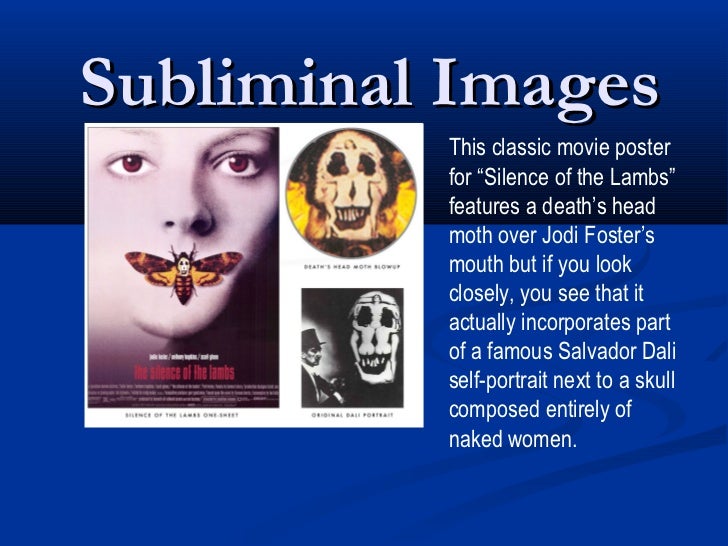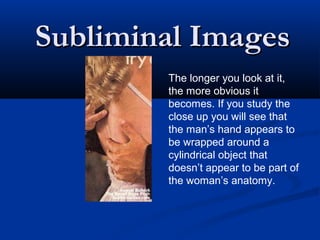
Supraliminal messages are perceived by the conscious mind. Priming generally relies on supraliminal stimuli, which means that the messaging may occur out of awareness, but it is still perceived, unlike subliminal messaging. Another example of modern research on nonconscious processes is research on priming. Intriguingly, in such subliminal mere-exposure experiments, participants indicate a preference for, or a positive attitude towards, stimuli they do not consciously remember being exposed to. In fact, mere-exposure effects occur even when novel stimuli are presented subliminally for extremely brief durations (e.g., Kunst-Wilson & Zajonc, 1980). Interestingly, mere exposure does not require conscious awareness of the object of an attitude. Merely perceiving a stimulus repeatedly, such as a brand on a billboard one passes every day or a song that is played on the radio frequently, renders it more positive. The most basic process of attitude formation is through mere exposure (Zajonc, 1968). These days, most scientific research on nonconscious processes (processing that occurs while we are awake, but unaware) is aimed at showing that people do not need consciousness for certain psychological processes or behaviors.

Research subjects primed with the stereotype of a professor – a sort of intellectual role model – outperformed those primed with an anti-intellectual stereotype. Priming can be used to improve intellectual test performance. But this does not mean that we obey these messages like zombies in fact, hidden messages have little effect on behavior outside the laboratory (Kunst-Wilson & Zajonc, 1980 Rensink, 2004 Nelson, 2008 Radel, Sarrazin, Legrain, & Gobancé, 2009 Loersch, Durso, & Petty, 2013).įigure 2. Research evidence shows that in laboratory settings, people can process and respond to information outside of awareness. Over the years there has been a great deal of speculation about the use of subliminal messages in advertising, rock music, and self-help audio programs. Therefore, the message is sensed, but for whatever reason, it has not been selected for processing in working or short-term memory. A message below that threshold is said to be subliminal: we receive it, but we are not consciously aware of it. A stimulus reaches a physiological threshold when it is strong enough to excite sensory receptors and send nerve impulses to the brain: this is an absolute threshold. It is also possible for us to get messages that are presented below the threshold for conscious awareness-these are called subliminal messages. Under quiet conditions, the hair cells (the receptor cells of the inner ear) can detect the tick of a clock 20 feet away (Galanter, 1962). It has been estimated that on a clear night, the most sensitive sensory cells in the back of the eye can detect a candle flame 30 miles away (Okawa & Sampath, 2007). The sensitivity of our sensory receptors can be quite amazing. Another way to think about this is by asking how dim can a light be or how soft can a sound be and still be detected half of the time. Absolute threshold refers to the minimum amount of stimulus energy that must be present for the stimulus to be detected 50% of the time. The sensitivity of a given sensory system to the relevant stimuli can be expressed as an absolute threshold. The absolute threshold for detecting light is greater than you probably imagined-the human eye can see a candle on a clear night up to 30 miles away! We also have sensory systems that provide information about balance (the vestibular sense), body position and movement (proprioception and kinesthesia), pain (nociception), and temperature (thermoception).įigure 1. It turns out that this notion of five senses is oversimplified. You have probably known since elementary school that we have five senses: vision, hearing (audition), smell (olfaction), taste (gustation), and touch (somatosensation). The conversion from sensory stimulus energy to action potential is known as transduction. These cells relay messages, in the form of action potentials (as you learned when studying biopsychology), to the central nervous system.

For example, light that enters the eye causes chemical changes in cells that line the back of the eye. When sensory information is detected by a sensory receptor, sensation has occurred. What does it mean to sense something? Sensory receptors are specialized neurons that respond to specific types of stimuli. Define sensation and explain its connection to the concepts of absolute threshold, difference threshold, and subliminal messages.


 0 kommentar(er)
0 kommentar(er)
